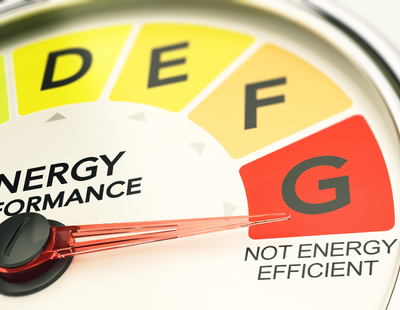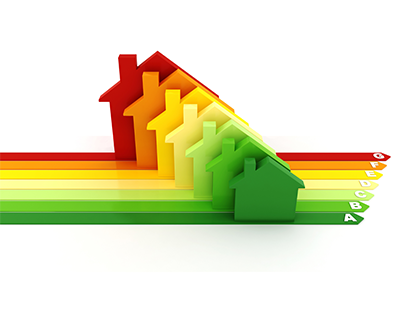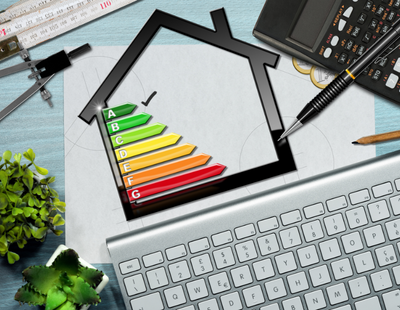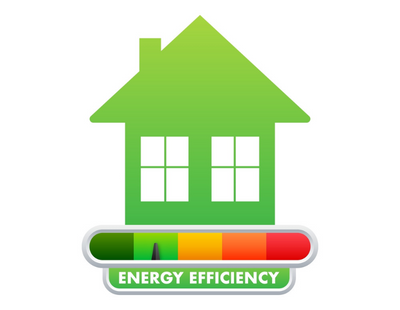For owner occupiers it would take a remarkable 43 years for all houses to be C or better, while flats would take 25 years.
A new ‘Greener Homes’ report by the portal shows that landlords are increasingly shunning lower-rated properties, with 61 per cent saying they would not now buy a rental property below an EPC rating of C, up from 47 per cent when asked last year.
Meanwhile for owner occupiers, only four per cent of homeowners have plans to have a heat pump installed; however, sellers who have improved their home from an EPC rating of an F up to a C could command an average price premium of almost £56,000 on top of the local house price growth.
The report reveals that 60 per cent of homes for sale on Rightmove – and 50 per cent of homes available to rent - have an EPC rating of D or below.
The report suggests that incentives to be offered could include stamp duty rebates if a new buyer makes green improvements in the first few years of purchase; more significant incentives for energy efficient homes for both new mortgages and remortgages; more grants or tax benefits for green technology such as electric car charging points and solar panels; and enabling new innovations that speed up the creation and implementation of energy efficient technology.
Rightmove analysed 300,000 properties that sold twice over the last 15 years and had a new EPC issued, and the results show a correlation between green improvements and the increased value of a home. The analysis removed the local house price growth that the home could also have benefitted from and factored in the square footage of the property.
A property moving from an F to a C rating could increase a property’s value by an average of an additional 15 per cent, or almost £56,000, when looking at the current national average asking price of £371,907.
Agents are increasingly including the EPC rating in their property descriptions as a selling point if it is in the A to C range. The number of listings that mention these EPC ratings has increased by 24 per cent on a year ago, and up by 59 per cent on 2019.
Other green features are up too, with a 40 per cent increase in electric charging point mentions versus last year. I
For the rental sector the jump in energy bills appears to have had an impact on the type of home that tenants are looking for. Nearly one in five tenants say a property’s energy efficiency is a major factor when choosing where to live.
Rightmove’s report shows that 40 per cent of landlords with just one property say they are more likely to sell up than improve their property; and 33 per cent of all landlords who own lower EPC rated properties plan to sell them rather than make improvements to their rating.
And 61 per cent of landlords say they would not now buy a rental property below an EPC rating of C, up from 47 per cent when asked last year.
Rightmove spokesperson Tim Bannister says: “It’s clear that the current incentives aren’t yet big enough to make people sit up and take notice, and even the incentives that do exist aren’t easy to find out about.
“The benefit of making green improvements can be seen in the overall premium that a seller can command. Of course, improvements that make a home more energy efficient could also mean the condition improves, such as installing new windows, and so owners will be weighing up the cost of improvements versus the return they can get when they come to sell. But the end result of making improvements is not just a refurbished home worth more money, it’s also a greener home.
“In order to shift the demand to greener homes, incentivisation and education is key. The ‘price of cosy’, or a better insulated home, is hard to quantify until people see how it can change how they live for the better, and they need to be able to afford it.
“Adoption at scale will take time and there are clearly areas that need more attention than others. Houses are much more energy inefficient than flats, and the sales market is lagging behind what we’re seeing in the rental market. The challenge right now is that there are not enough suppliers and equipment for the greenest option to be the most affordable option for home-owners and landlords. We need to wait and see what the government proposes or what green finance options become available. Affordability will remain a challenge unless the incentives are big enough.
“The days of building energy inefficient homes is already over, and we need to get to the point when running an energy inefficient home is a thing of the past. People need to know what to do, in what order, why they are doing it, and what benefits it will bring. Our analysis does show that our housing stock is going greener, but more needs to be done to speed it up.”














%20-%20IMAGE%20Client%20Accounting%20%E2%80%93%20what%20are%20your%20options.jpg)





Join the conversation
Jump to latest comment and add your reply
Cue the Gibbons comment in 3-2-1.
I agree, 40% of our 26 million homes are D or lower, it was never going to be a 10 year job, it will take a couple of generations of properties changing hands a few times for us to get there. You arent going to get current owners to foot the bill now in one fell swoop. It doesnt help that government still hasnt backed the replacement for gas boilers which will have the biggest single impact. The smart money is on hydrogen boilers, not rip off useless heat pumps the size of small cars, but vested interests and politics are getting in the way as usual.
Please login to comment